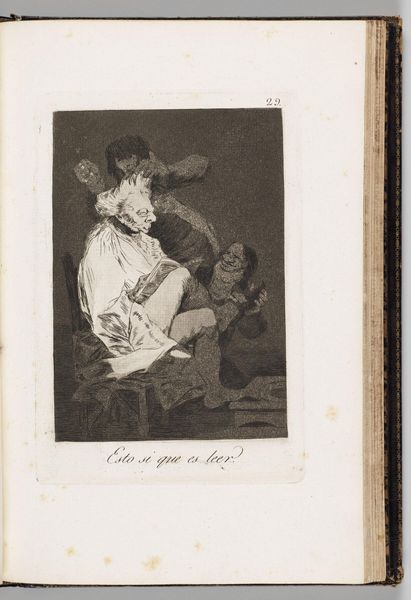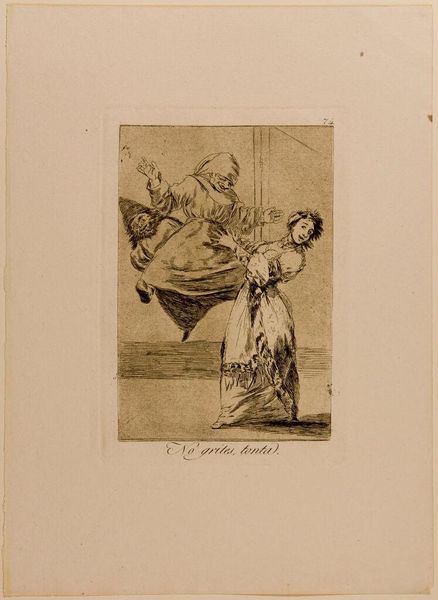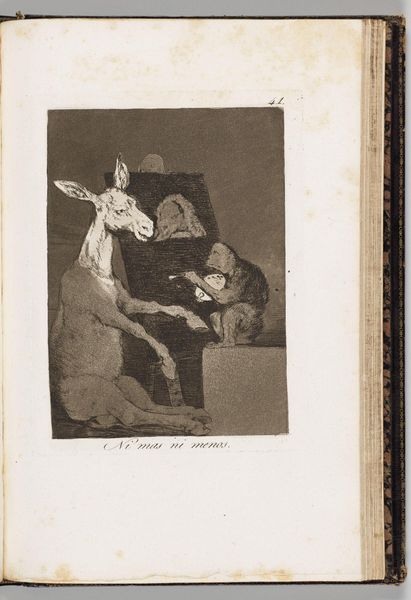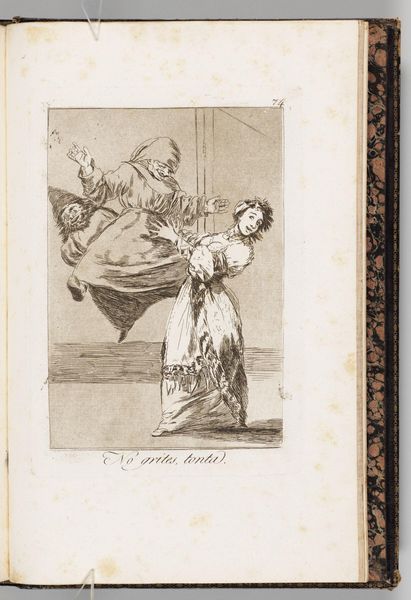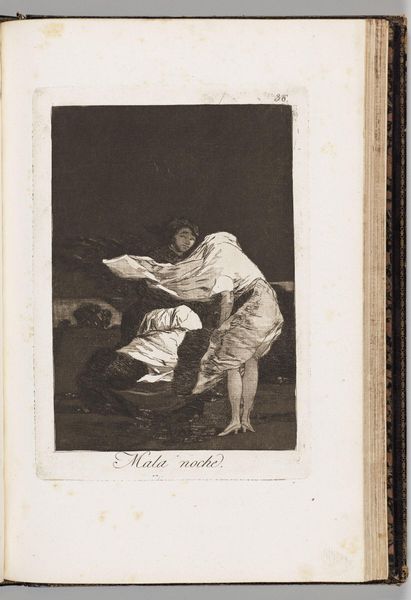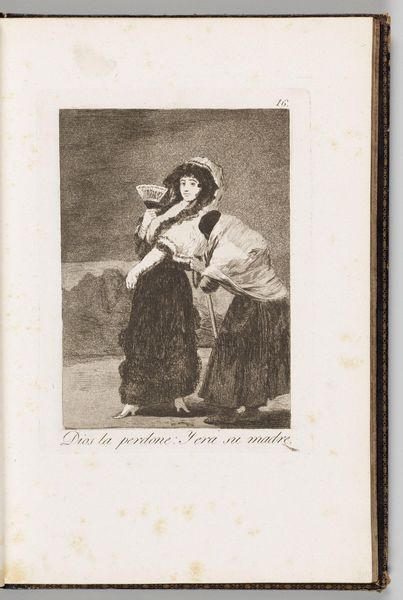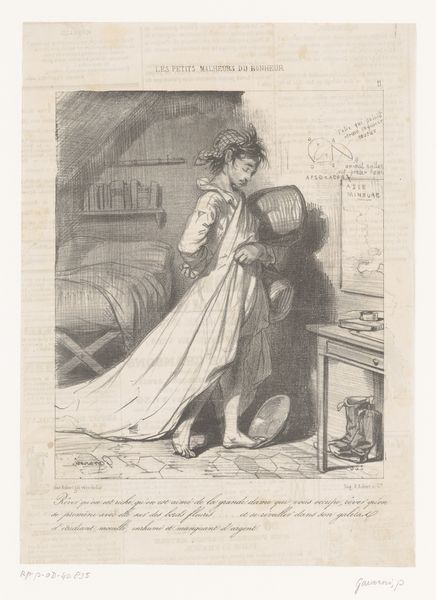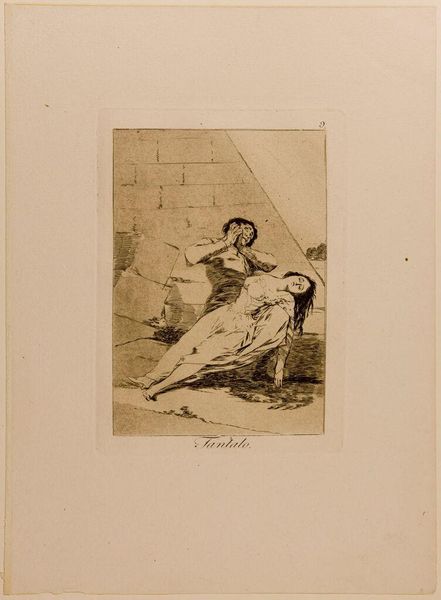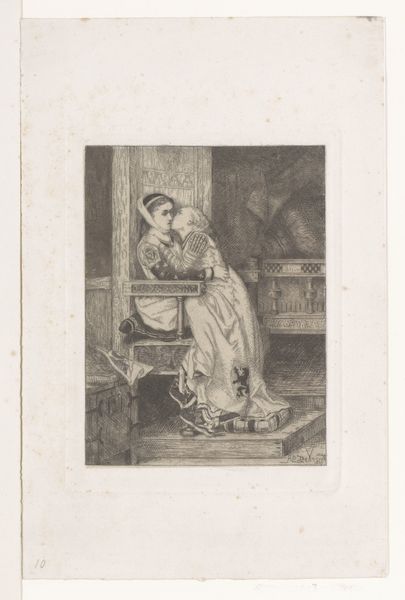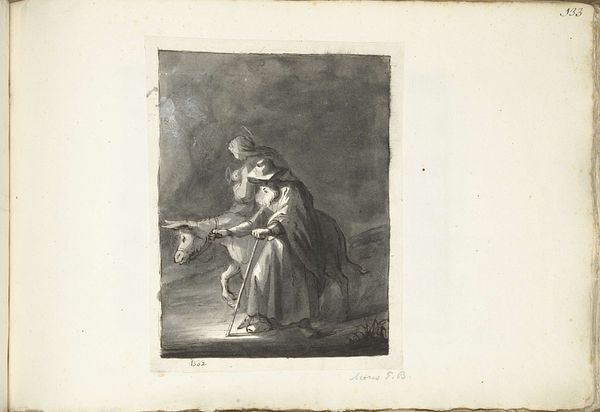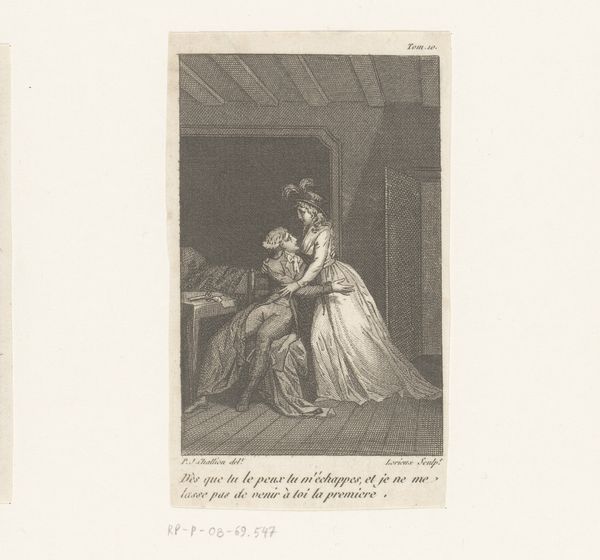
Dimensions: sheet: 30.2 x 20.5 cm (11 7/8 x 8 1/16 in.) plate: 21.5 x 15.2 cm (8 7/16 x 6 in.)
Copyright: CC0 1.0
Curator: Goya's etching, "Because She Was Susceptible," presents a woman seated in what appears to be a prison cell. The title is inscribed below the image. Editor: The overall mood is incredibly somber. Her bowed head and the starkness of her surroundings suggest deep despair, as if her sensitivity is a tragic flaw. Curator: The small, high window is a recurring symbol in Goya's work, often representing the limited perspectives and oppressive societal structures of his time. It signifies confinement, both literal and metaphorical. Editor: Indeed. And it underscores how women were often penalized simply for feeling deeply, for deviating from prescribed norms. The visual language speaks to the marginalization of sensitive women within a patriarchal society. Curator: Goya masterfully uses aquatint to create areas of shadow, enhancing the sense of imprisonment and emotional weight. There’s a rawness to the execution that speaks volumes. Editor: It forces us to confront the historical reality of female suffering, challenging us to recognize similar patterns of injustice today. Sensitivity shouldn't be a cause for imprisonment. Curator: A poignant piece—Goya makes visible the internal prisons we create through our own sensitivity and external structures of repression. Editor: Precisely. It reminds us that empathy and vulnerability, though often seen as weaknesses, are essential to our humanity, and to a just society.
Comments
No comments
Be the first to comment and join the conversation on the ultimate creative platform.

